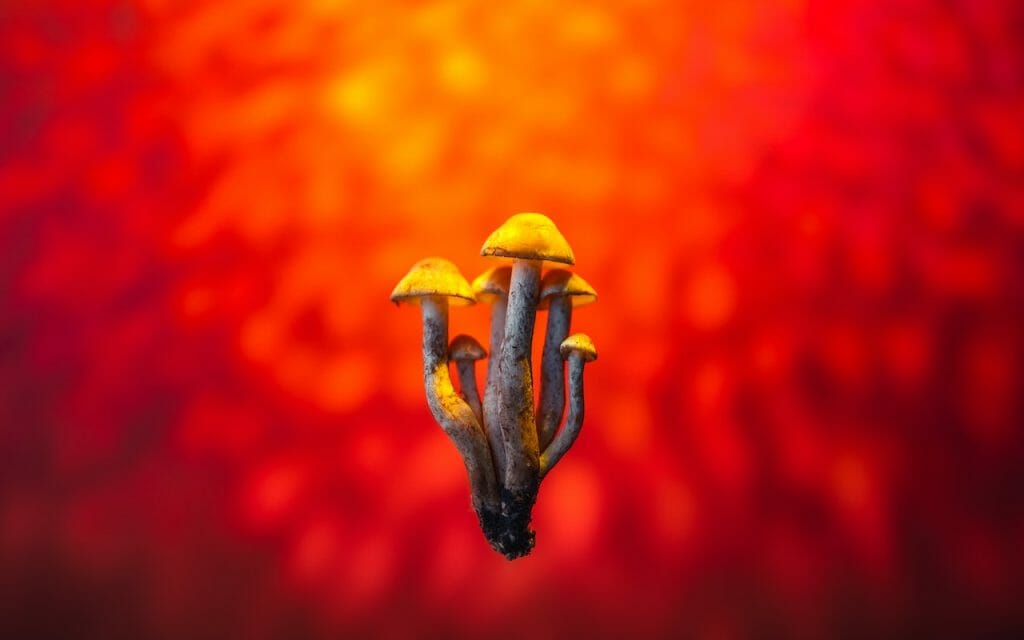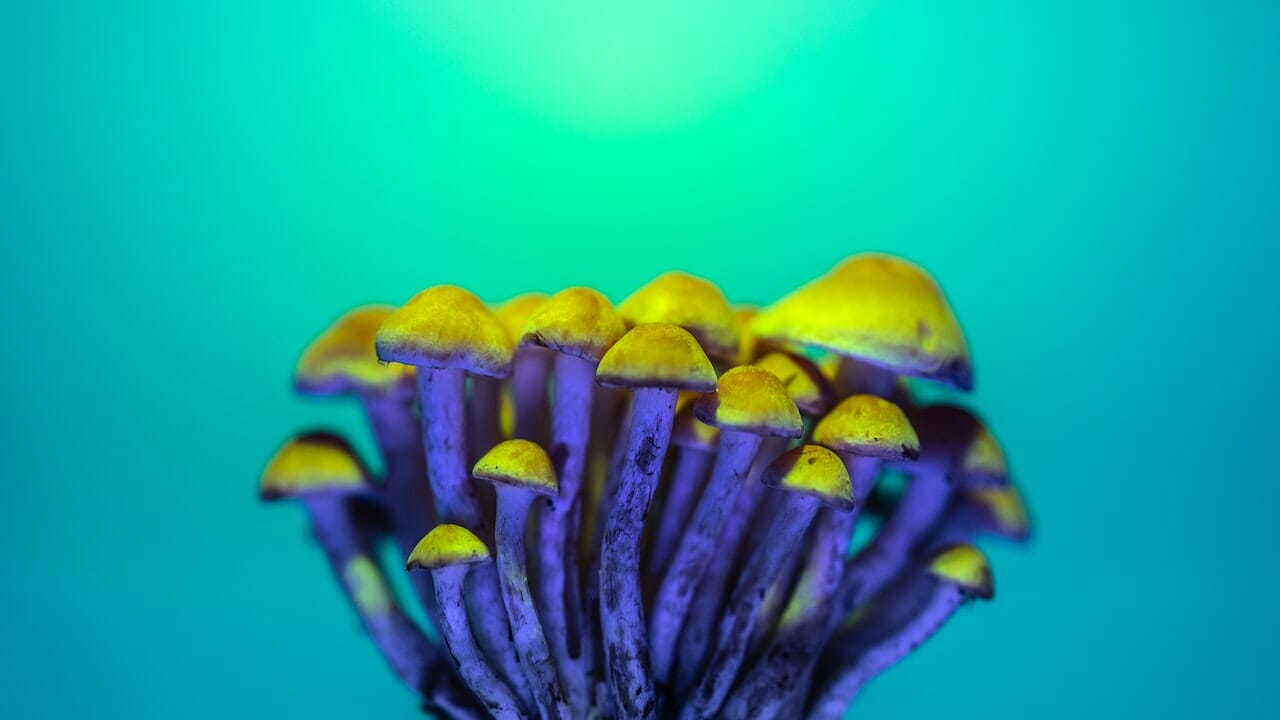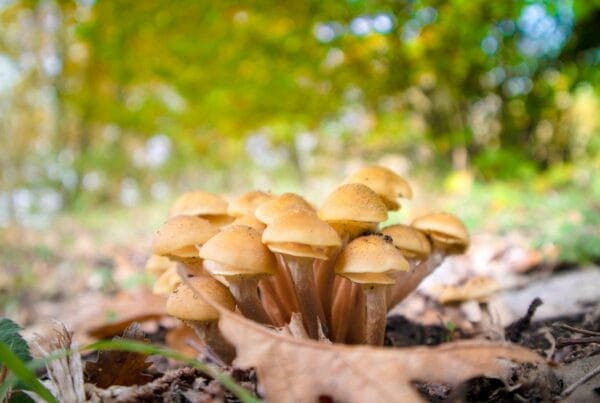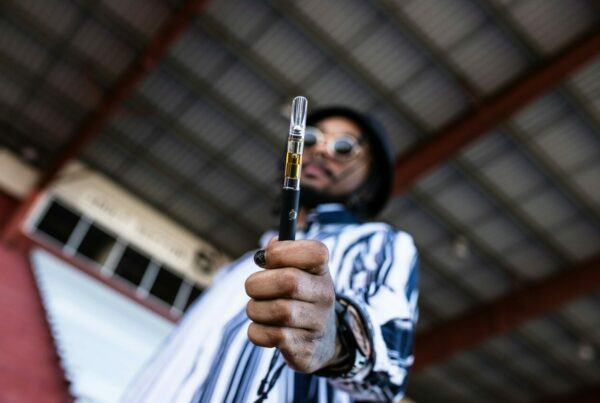Lysergic acid diethylamide (LSD) is a remarkably potent hallucinogen that has garnered considerable research attention among psychedelic substances. Initially popular for recreational purposes, LSD has evolved into a psychoactive compound with potential benefits for mental health. This change in perspective has paved the way for innovative research into LSD’s effects, notably in more palatable forms such as LSD edibles.
Key Takeaways:
- LSD, a powerful hallucinogen, originates from the ergot fungus.
- LSD shares characteristics with psilocybin and interacts with the 5-HT2A receptors.
- LSD can induce visual disturbances, mood fluctuations, ego disintegration, and pseudo-hallucinations.

Decoding LSD
LSD is an extraordinarily potent hallucinogen that can profoundly alter an individual’s perception of reality and significantly distort sensory experiences. LSD originates from “ergot,” a fungus prevalent on rye and other grains.
At the molecular level, LSD is a complicated chemical belonging to the ergoline family. It comprises a bicyclic hexahydroindole group and a bicyclic quinoline group (lysergic acid). The term ‘Lysergic Acid Diethylamide’ derives from the functional group attached to its core. LSD’s structure is akin to other ergoline alkaloids, such as ergotamine, found in the ergot fungus Claviceps purpurea, and the neurotransmitter serotonin.
The Effects of LSD
Upon ingestion, LSD penetrates the brain, triggering chemical reactions that can persist for several hours. Short-term effects of LSD may include:
- Unpredictable mood swings
- Distortions in perception
- Feeling dizzy
- Decreased appetite
- Lack of coordination
The Advantages What Are the Benefits of Using LSD?
The benefits of LSD are diverse and largely depend on the quantity consumed. The majority of research concentrates on the positive outcomes associated with the intake of smaller doses of this psychedelic compound. In the following text, we will explore the advantageous effects arising from LSD usage.
Pain Management and Neuronal Growth
Researchers at Maastricht University have discovered that a single microdose of LSD can produce pain-alleviating effects that endure for a minimum of five hours, possibly even longer.
In the Cold Pressor Test, where participants immerse their hands into 3°C (37.4°F) water for as long as possible, those who consumed 20 mg of LSD managed to keep their hands submerged for 20% longer than those who didn’t. Furthermore, they reported experiencing reduced levels of pain and discomfort.
In addition, LSD can contribute to the development and growth of the 86 billion neurons in our brain. Moderate LSD doses, ranging from 5 to 20 ug, raise the levels of BDNF in blood plasma. This is crucial because mood disorders like depression, often associated with neuroplasticity problems, may be lessened due to LSD’s beneficial effects on neuronal health.
Improvement of Mental Health
Dr. Robin Carhart-Harris from Imperial College London introduced the entropic brain hypothesis. This theory posits that mental health disorders can be attributed to rigid thought patterns, perpetuated by an overactive default mode network (DMN). Psychedelic substances such as LSD have the capacity to disrupt the DMN, enhance brain entropy, and promote the dismantling of harmful neural pathways while fostering the development of beneficial ones.
A study involving over 1,000 microdosers demonstrated a reduction in depression. Another extensive cross-sectional study indicated a decrease in negative moods and detrimental attitudes, alongside an increase in open-mindedness and cognitive function.
Treatment for Addiction
A comprehensive analysis of randomized-controlled clinical trials utilizing LSD in psychiatry revealed that it is most efficient in treating alcohol dependence. This conclusion is further corroborated by the positive results experienced by numerous patients treated for alcoholism by Humphrey Osmond and at the Spring Grove Hospital Centre during the 1950s and 1960s.
Easing Anxiety and Depression at Life’s End
Dr. Peter Gasser’s research demonstrated that LSD-assisted psychotherapy can potentially ease anxiety in terminally ill cancer patients when confronting end-of-life issues and improve their overall quality of life. Currently, a Phase 2 trial is underway to further explore the effects of LSD therapy on depression.
Demystifying LSD Edibles: What They Contain and How They’re Made
LSD edibles are a category of food and beverages that incorporate the hallucinogenic compound, LSD. They come in different forms such as chocolates, candies, baked goods, and even unique items like LSD mints.
The Ingredients
- LSD: This is the active component responsible for hallucinogenic effects. It is carefully measured and incorporated into the edible.
- Edible Base: The LSD is usually dissolved or infused into a consumable medium such as a gummy, candy, sugar cube, or other edible substances. These mediums act as the carrier for the hallucinogenic compound.
- Flavouring and Ingredients: The specific edible product may contain flavourings, sweeteners, and other ingredients to enhance taste and texture. These could include natural or artificial flavourings, colours, and sugars, and can vary widely.
The Making Process:
- LSD Synthesis: The first step involves the chemical production of LSD, a process that requires a deep understanding of organic chemistry and the necessary chemicals, equipment, and a laboratory setting.
- Liquid Formulation: Once the LSD is synthesized, it is generally transformed into a liquid form by dissolving it in a solvent. This liquid acts as a concentrated LSD solution.
- Infusion: The liquid LSD is then infused into an edible medium like gummy candies, sugar cubes, or blotter paper. The infused medium absorbs the liquid, enabling the LSD to be consumed orally.
Experiencing the Psychedelic Impact of Psychoactive Compounds in LSD Edibles
LSD produces intense visual effects. Colours seem more vivid, objects may seem to be encircled by halos or rainbows, and shapes can transform. Regardless of whether the eyes are open or closed, users may see
LSD transforms the way you perceive yourself and your environment. It can induce a range of mental states, making thoughts either clear and profound or devoid of logical consistency. It may also alter your perception of time, distance, and body image, blurring the line between self and the external world. Some people even report sensory blending, like seeing music or hearing colours.
Suggested LSD Products
While there are many LSD edibles available, it’s essential to buy from a reliable dispensary to ensure you’re getting real LSD, not other substances such as PCP, ecstasy, or ketamine.
Deadhead Chemist – LSD Infused Gummies
Deadhead Chemist offers LSD-infused edibles, each with 100 micrograms (ug) of LSD, in various flavours. Each package contains a single gummy, which has demonstrated potential benefits for individuals suffering from conditions such as obsessive-compulsive disorder (OCD), post-traumatic stress disorder (PTSD), alcohol addiction, depression, and cluster headaches.
Deadhead Chemist – Mint Tea
Deadhead Chemist’s raspberry mint tea provides a tasty way to experience LSD’s effects. LSD and other psychedelics act like the serotonin neurotransmitter and enhance the brain’s flow state.
Earthly Delights – Candy Flips
Candy flipping has been a favourite since the rave scene of the late 1980s. Adventurers and party enthusiasts continue to enjoy the remarkable combination of these two substances. Users often report deep feelings of love and a sense of interconnectedness, enhanced by captivating visual effects like intensified colours, object morphing, and complex geometric patterns.
Concluding Remarks
LSD has historically been linked to transformative experiences. With the growth in scientific comprehension surrounding this substance, its popularity has experienced a boost, and the introduction of LSD-infused edibles offers a fresh opportunity for users. These flavorful indulgences have become
Experiment in a safe and enjoyable manner with carefully measured doses of LSD.
Shroom Gummies Canada, recognized as Canada’s leading supplier of premium quality shrooms online, provides an extensive array of LSD-infused edibles and cannabis products. Explore our collection at your own pace, add the products you prefer to your cart, and unwind at home while we handle the delivery. We also boast an assorted range of psilocybin shrooms, edibles, beverages, and capsules for your convenience. Be sure to check out our LSD delivery page for additional details!
Frequently Asked Questions
How does LSD differ from psilocybin?
CHARACTERISTICS LSD PSILOCYBIN Source Semi-synthetic chemical compound Naturally occurring in fungi Available Forms Tabs, microdots, liquid, gummies, blotter paper Dried mushrooms, capsules, teas, chocolates Potency Highly potent, dosed in micrograms (ug) Varies depending on mushroom species and preparation Onset and Duration Quick onset (15-60 minutes), short-lasting effects (3-5 hours) Gradual onset (30-60 minutes), moderate-lasting effects (4-6 hours)
How can one avoid negative experiences with LSD?
- Choose Your Surroundings Wisely
- Prepare Your Mental State
- Start with a Low Dose
- Have a Trip Guide
- Create a Tranquil Environment
- Use Deep Breathing and Grounding Exercises
- Accept and Release
What is the duration of the effects?
The impacts of the acid will begin to be felt between 30-60 minutes following consumption. Individuals with a higher sensitivity to psychedelics may start to experience the effects sooner. Within as short a time as 15 minutes, you can determine if you’ve ingested acid. The peak of your experience will occur around three hours after consumption. During this time, your perception of time might alter, and you may experience hallucinations.
Keep in mind, it’s not unusual to feel a sense of disconnection from reality at this point. The peak phase can last between 3 and 5 hours, after which you enter the offset phase that lasts a further 3 to 5 hours.
How does LSD interact with the human body?
The primary interaction of LSD is with the brain’s serotonin system. It binds to and stimulates the 5-HT2A receptor, causing a chain of neurochemical and physiological reactions. The effects of LSD can significantly vary and can be influenced by certain factors.
Does LSD exist in forms other than edibles?
Yes. LSD is available in a variety of forms. The four primary types of LSD products are blotter paper, liquid solutions, tablets or microdots, and gelatin sheets.
Suggested Readings:
| CHARACTERISTICS | LSD | PSILOCYBIN |
| Source | Semi-synthetic chemical compound | Naturally occurring in fungi |
| Available Forms | Tabs, microdots, liquid, gummies, blotter paper | Dried mushrooms, capsules, teas, chocolates |
| Potency | Highly potent, dosed in micrograms (ug) | Varies depending on mushroom species and preparation |
| Onset and Duration | Quick onset (15-60 minutes), short-lasting effects (3-5 hours) | Gradual onset (30-60 minutes), moderate-lasting effects (4-6 hours) |





